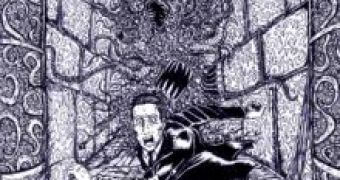According to new research, the brain processes social outsiders as less than human; brain imaging provides accurate depictions of this prejudice at an unconscious level. A new study by Princeton University psychology researchers Lasana Harris and Susan Fiske shows that when viewing photographs of social out-groups, people respond to them with disgust, not a feeling of fellow humanity.
Social out-groups are perceived as unable to experience complex human emotions, share in-group beliefs, or act according to social norms, moral rules, and values. The authors describe this as "extreme discrimination revealing the worst kind of prejudice: excluding out-groups from full humanity." Their study provides evidence that while individuals may consciously see members of social out-groups as people, the brain processes social out-groups as something less than human, whether we are aware of it or not.
Twenty four Princeton University undergraduates viewed a large number of color photographs of different social groups (including Olympic athletes, business professionals, elderly people, and drug addicts), and images of objects (including the Space Shuttle, a sports car, a cemetery, and an overflowing toilet) that elicited the emotions of pride, envy, pity, or disgust. The four emotions were derived from the Stereotype Content Model (SCM), which predicts differentiated prejudices based on warmth and competence. Warmth was determined by friendliness, competence by capability. The two emotional extremes were pride and disgust; pride elicited high warmth and high perception of competence, and disgust elicited low warmth and low perception of competence. Envy and pity were considered moderate prejudices; envy elicited low warmth and high perception of competence, and pity elicited high warmth and low perception of competence.
Medial prefrontal cortex (MPFC) brain imaging determined if the students accurately chose the correct emotion illustrated by the picture (according to pretest results in which a different group of students determined the emotion that best fit each photograph). The MPFC is only activated when a person thinks about him- or her-self or another human. When viewing a picture representing disgust, however, no significant MPFC brain activity was recorded, showing that students did not perceive members of social out-groups as human. The area was only activated when viewing photographs that elicited pride, envy, and pity. (However, other brain regions -- the amygdala and insula -- were activated when viewing photographs of "disgusting" people and nonhuman objects.)
The MPFC only showed significant activity when a person saw or thought about a human being. The authors conclude that this lack of MPFC brain activity while viewing photographs of people proves that "members of some social groups seem to be dehumanized."

 14 DAY TRIAL //
14 DAY TRIAL //